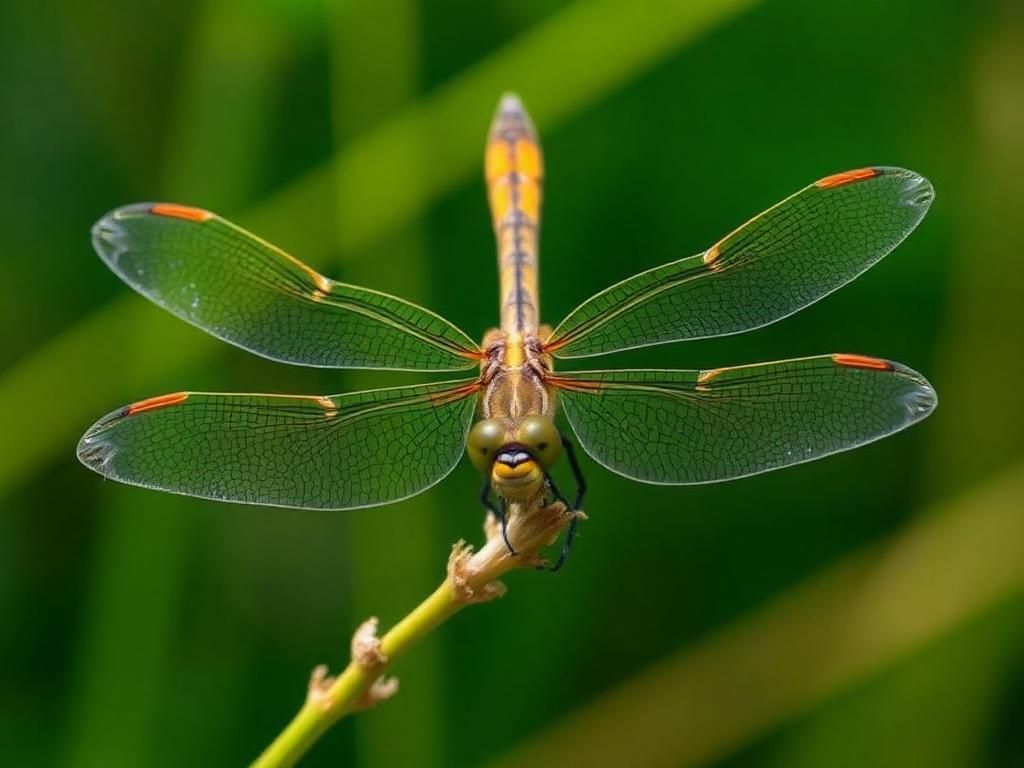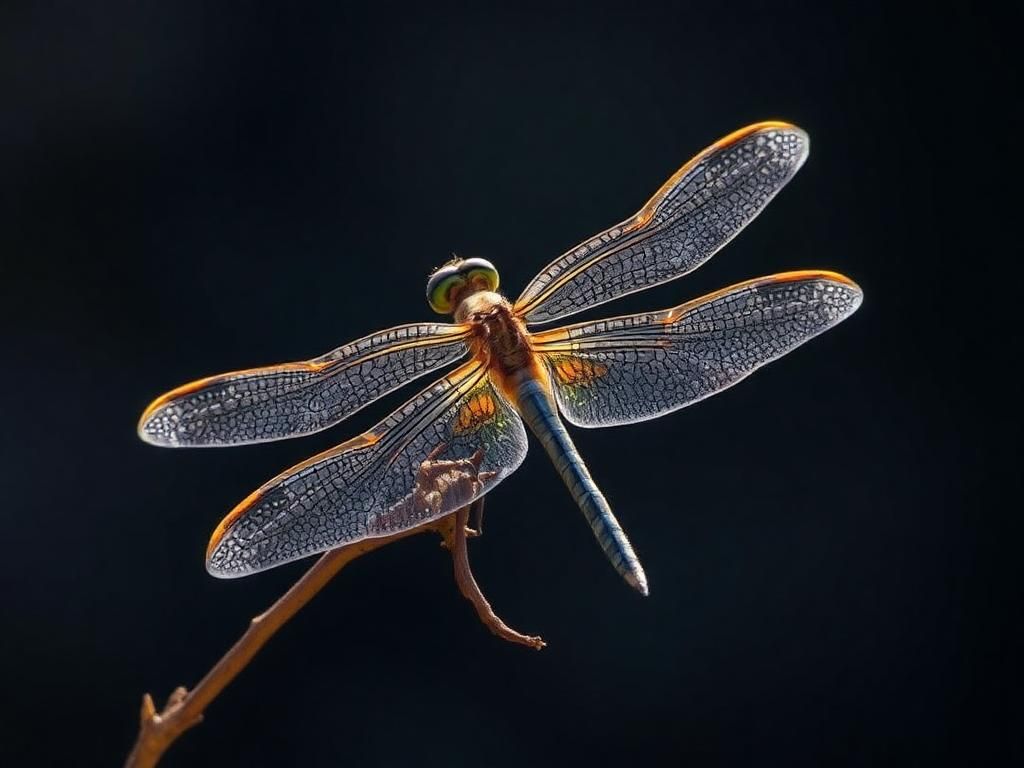The significance of dragonfly transcends mere beauty; it encompasses ecological, cultural, and biological roles that this remarkable insect plays in our world. With their iridescent bodies and impressive aerial agility, dragonflies are among the most fascinating creatures found in many environments. Their existence hints at the health of ecosystems, their presence captures the imaginations of various cultures, and their biological features provide significant insights into evolution and flight mechanics.
Ecological Significance of Dragonflies
Role as Indicators of Ecosystem Health
One of the most striking features of the dragonfly is its sensitivity to environmental changes, which makes it a crucial indicator of ecosystem health. Dragonflies thrive in clean, unpolluted waters, thus their presence often indicates the quality of local freshwater bodies. Scientists observe their populations and varieties to gain insight into the changing conditions of waterways, helping to monitor environmental health and potential issues like pollution and habitat degradation.
Predator and Prey Relationships
The role of dragonflies as predators significantly contributes to maintaining ecological balance. Dragonflies consume vast numbers of mosquitoes and other small insects, which helps control pest populations. In turn, they serve as a vital food source for various animals, including birds, fish, and amphibians, establishing a strong predator-prey relationship within the food web.
Habitat Requirements and Biodiversity
Dragonflies primarily inhabit aquatic environments such as ponds, lakes, and wetlands where they breed and develop. The presence of dragonflies contributes to the biodiversity of these ecosystems, fostering a healthy habitat that supports numerous other species. Their preference for specific aquatic habitats emphasizes the interconnectedness of life forms and the natural landscapes they inhabit.
Cultural Significance of Dragonflies
Symbolism in Different Cultures
Throughout history, dragonflies have held significant cultural symbolism across various civilizations. In Native American folklore, they are often viewed as symbols of change and transformation, representing adaptability and renewal. In Japan, dragonflies are celebrated in art and poetry, symbolizing strength, courage, and happiness. Their presence in various folktales and myths underlines their status as powerful symbols in human culture.
Influence in Literature and Art
Dragonflies have appeared in literary works, artworks, and modern media, embodying beauty, freedom, and ethereal qualities. Their imagery evokes deep sentiments, often used as metaphors for fleeting moments and the passage of time. From poetry that reflects on transformation to paintings that capture their grace, dragonflies continue to inspire creativity across genres. Many modern artists incorporate dragonflies into their work, indicating their continuous relevance in cultural expression.
Biological Significance of Dragonflies

Adaptive Features and Evolution
The biological significance of dragonflies is marked by their astonishing anatomical adaptations, which include large multifaceted eyes and intricate wing structures that allow for remarkable flight capabilities. These adaptations have evolved over millions of years, showcasing a diverse lineage that has enabled dragonflies to thrive in various environments across the globe. Studying their evolution provides insight into the complexities of ecological adaptation and survival.
Research Importance
Dragonflies are increasingly important in scientific research due to their unique flight mechanics and behavior. Researchers study their flight patterns and hunting techniques, which may inspire advancements in technology, particularly in drone development. Moreover, understanding how dragonflies respond to climate change enhances our comprehension of environmental shifts affecting numerous species. The study of dragonflies contributes significantly to our knowledge of biodiversity and ecosystem dynamics.
Conservation Challenges Facing Dragonflies
Threats to Dragonfly Populations
Despite their ecological importance, dragonfly populations face numerous threats. Habitat loss driven by urbanization, agriculture, and pollution has significantly impacted their survival. Additionally, climate change poses ongoing challenges, affecting their breeding and feeding habitats. Monitoring these threats is essential to safeguard their populations and the balance of ecosystems where they thrive.
Conservation Efforts
Various conservation initiatives are underway to protect dragonflies and their habitats. Local projects aim to restore wetlands and natural water bodies, while global strategies focus on habitat conservation and awareness programs to educate the public about the importance of dragonfly conservation. Efforts to revive and maintain healthy ecosystems are vital not only for dragonflies but also for the numerous other species that rely on these habitats.
Conclusion
Summary of the Significance of Dragonflies
The significance of dragonflies extends far beyond their aesthetic appeal. Their roles as ecological monitors, cultural symbols, and biological marvels illustrate the complex interdependencies of nature. Understanding these roles enhances our appreciation of dragonflies and the ecosystems they inhabit.
Call to Action
To preserve the significance of dragonfly populations, individuals are encouraged to engage in conservation efforts, educate themselves about these insects, and advocate for the preservation of their natural habitats. Recognizing and valuing their presence in our environment can lead to more informed choices that promote biodiversity and healthy ecosystems.

| Aspect | Significance | Examples |
|---|---|---|
| Ecological Role | Indicators of water quality and ecosystem health | Presence in clean lakes and streams |
| Predator-Prey Dynamics | Natural pest control | Consuming mosquitoes and being preyed upon by birds |
| Cultural Symbolism | Representations of transformation and resilience | Folklore in Native American and Japanese cultures |
| Biological Features | Unique flight adaptations and hunting strategies | Large eyes, diverse wing structures |
| Conservation Challenges | Threats from habitat loss and climate change | Urbanization impacting wetland areas |
Frequently Asked Questions
1. Why are dragonflies important for ecosystems?
Dragonflies serve as indicators of ecosystem health, control pest populations, and contribute to biodiversity.
2. What threats do dragonflies face today?
Threats include habitat loss, pollution, and the impacts of climate change.
3. How do dragonflies symbolize change in different cultures?
Various cultures view dragonflies as symbols of transformation and renewal, representing adaptability in life’s cycles.
4. What adaptations allow dragonflies to hunt efficiently?
Their large eyes provide excellent vision, while their wing structure enables agile flight and hovering.
5. How can individuals help conserve dragonfly populations?
Participating in local conservation efforts, preserving natural habitats, and educating others about dragonflies can help.
6. Are dragonflies harmful to humans?
No, dragonflies are not harmful to humans; they primarily consume small insects, including pests like mosquitoes.
7. What role do dragonflies play in folklore and art?
Dragonflies feature prominently in literature and art, often symbolizing beauty, freedom, and change.
8. How do scientists study dragonflies for climate research?
Researchers analyze dragonfly populations to understand their responses to environmental changes, providing insights into broader ecological impacts.
9. What are some popular species of dragonflies?
Notable species include the Green Darner, Eastern Pondhawk, and the Common Whitetail dragonfly, each showcasing unique characteristics.
10. Where can I find dragonflies in my area?
Look for them near ponds, lakes, and wetlands; observing their behaviors can be an enriching experience in nature.
